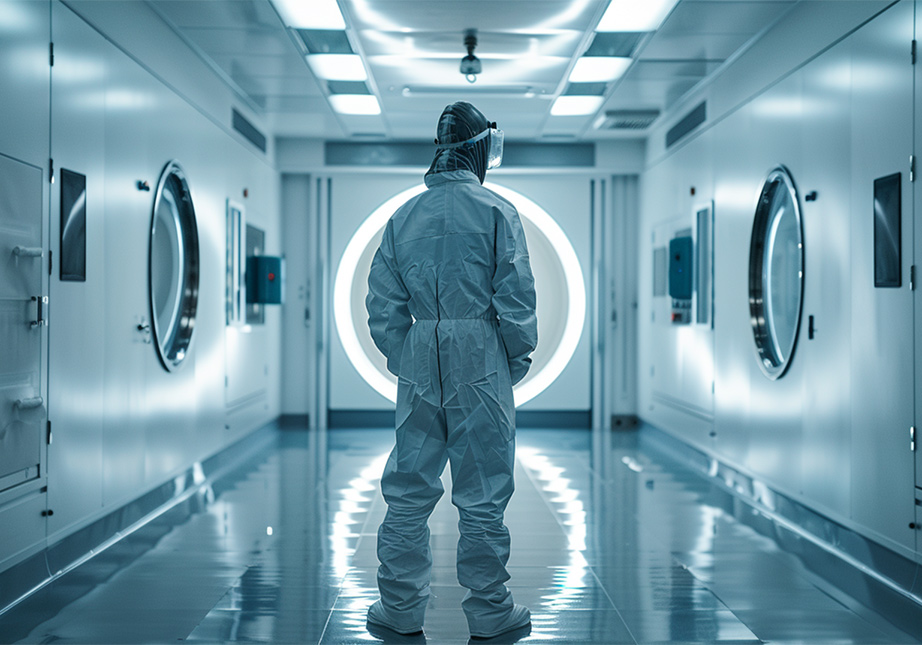
Jun 04, 2024
Cleanrooms for Optics
Understanding Cleanrooms for Optics: An Overview
Cleanrooms for optics are specialized environments designed to maintain low levels of particulates, such as dust, airborne microbes, and aerosol particles. Their primary purpose is to protect sensitive optical components from contamination that could degrade performance. Unlike general cleanrooms, those tailored for optics are precision-controlled environments essential for the production and testing of optical elements like lenses, mirrors, and fiber optics.
The Essence of Optical Cleanrooms
Optical cleanrooms are distinguished by their stringent contamination control, which is vital for the production and assembly of microelectronics and photonics. These facilities are engineered to provide an environment with meticulously regulated air quality, temperature, and humidity, ensuring the integrity of delicate optical products.
Objectives of Cleanrooms in Optics Manufacturing
Our cleanrooms at G-Con are designed with the primary objectives of minimizing particulate contamination and providing a stable environment for high-precision optical manufacturing. This includes the production of components for AR/VR, free space optics, micro-optics endoscopic assemblies, electro-optics, and night vision systems, among others.
Impact of Cleanroom Environment on Optical Components
The environment within a cleanroom directly affects the quality and performance of optical components. Contaminants can cause scattering or absorption of light, leading to defects in the final product. Therefore, maintaining an optimal cleanroom environment is critical for achieving the precision required in optics manufacturing and ensuring the reliability of the optical components produced.
ISO Classifications and Standards for Optics Cleanrooms
When you’re delving into the world of optics cleanrooms, understanding ISO classifications is paramount. These classifications, such as ISO Class 7, are pivotal in defining the level of cleanliness by the number of allowable particles in the air. For optics cleanrooms, where even the smallest particle can disrupt the integrity of a component, adhering to these standards is not just best practiceit’s essential.
Impact on Design and Operation
The ISO classification directly influences the design of a cleanroom. It dictates the air filtration systems, such as HEPA or ULPA filters, that must be installed to achieve the necessary particle count. The layout must promote laminar flow to prevent air turbulence that could introduce contaminants. Our modular cleanroom solutions at G-Con are engineered to meet these stringent requirements, ensuring that your operations are both compliant and efficient.
Compliance with ISO Standards
To ensure compliance, every aspect of the cleanroom environment must be monitored and controlledfrom temperature and humidity to the materials and garments used within. Regular airborne particle counts are conducted to verify that the cleanroom maintains the specified ISO class.
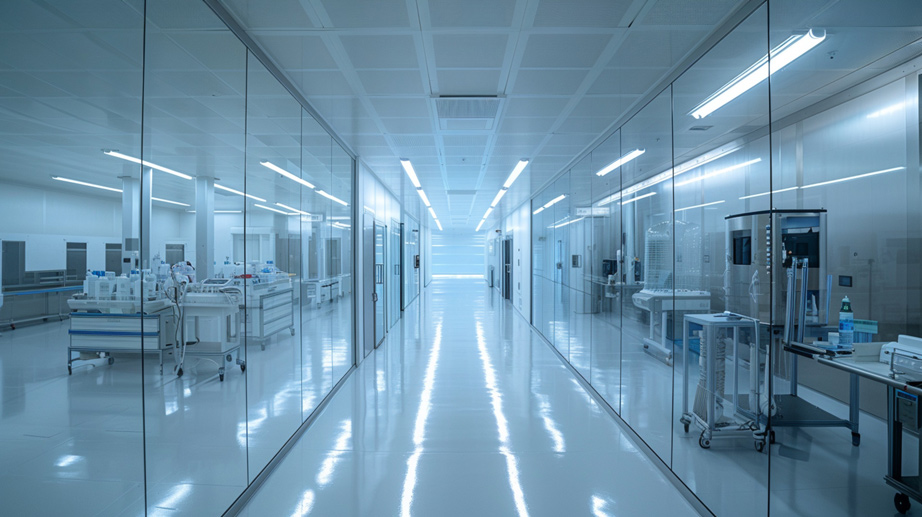
Staying Updated on ISO Standards
For cleanroom managers, staying informed about updates to ISO standards is crucial. This can be achieved through regular engagement with industry publications, participation in relevant workshops, and membership in professional organizations. At G-Con, we prioritize keeping our designs and services aligned with the latest standards, providing you with a cleanroom that not only meets but exceeds industry expectations.
Controlling Contamination in Optics Cleanrooms
Contamination control is the cornerstone of optics cleanrooms. Particulate contamination, originating from various sources such as personnel, equipment, and materials, can significantly impair the performance of optical components. Even microscopic particles can cause defects in optical coatings or introduce errors in precision measurements.
Common Sources of Contamination
In optics cleanrooms, common contaminants include dust, fibers, and chemical vapors. These can stem from the cleanroom environment, the manufacturing process, or even the cleanroom staff themselves. It’s crucial to identify and mitigate these sources to maintain the integrity of optical components.
Impact of Contamination on Optical Components
Contamination can lead to scattering of light, reduced transmission, and ultimately, the failure of optical systems. This underscores the importance of maintaining an immaculate cleanroom environment for the production and assembly of optical components.
Strategies for Minimizing Contamination Risks
At G-Con, we implement rigorous protocols to minimize contamination risks. These include strict gowning procedures, the use of specialized equipment like ultrasonic baths for cleaning, and the application of positive pressure to prevent ingress of contaminants. Our cleanrooms are designed with laminar airflow systems and utilize HEPA/ULPA filtration to capture airborne particles effectively.
Detection and Measurement of Contamination
To ensure that our cleanrooms meet ISO 14644-1 standards, we regularly perform airborne particle counts and surface particle detection. This monitoring is critical for maintaining the required cleanliness levels and for the early detection of potential contamination issues.
Optimal Environmental Conditions for Optics Cleanrooms
Maintaining precise environmental conditions is critical for the functionality of optics cleanrooms. The ideal temperature and humidity levels are tailored to the specific requirements of the optical components being manufactured or handled. Typically, this involves:
- Temperature: Maintained within a narrow range, often between 20C to 22C, to prevent thermal expansion or contraction of sensitive components.
- Humidity: Kept at a relative humidity of 45-55% to prevent static build-up and moisture-related issues.
Pressure Differentials and Clean Environment
Pressure differentials play a vital role in contamination control. By maintaining a higher pressure inside the cleanroom compared to adjacent areas, we prevent unfiltered air from entering and potentially introducing contaminants.
Challenges in Large Cleanrooms
In larger cleanrooms, ensuring uniform environmental conditions becomes more complex. Our design strategies at G-Con include zoned control systems to address these challenges, ensuring that each area of the cleanroom maintains optimal conditions.
Environmental Conditions and Optical Precision
Environmental conditions directly impact the precision of optical measurements. Fluctuations in temperature or humidity can lead to measurement errors. Therefore, our cleanrooms are equipped with advanced environmental control technologies to ensure that the conditions remain stable, allowing for the highest level of precision in optical measurements.
Air Filtration and Ventilation Solutions in Optics Cleanrooms
Effective Air Filtration Systems
In optics cleanrooms, air quality is paramount. The most effective air filtration systems are those that incorporate High-Efficiency Particulate Air (HEPA) or Ultra-Low Penetration Air (ULPA) filters. These systems are capable of trapping 99.99% of particles, as small as 0.3 microns for HEPA and even smaller for ULPA, which is crucial in environments where the smallest particle can compromise the optical manufacturing process.
Contribution of Ventilation Systems
Ventilation systems are designed to maintain a constant, unidirectional flow of filtered air. By doing so, they effectively remove airborne particles and prevent stagnant air zones where contaminants could accumulate. Our cleanrooms at G-Con utilize laminar airflow systems, which are specifically designed to create a uniform flow of air that moves in a single direction, further reducing the risk of contamination.
Maintenance of Filtration and Ventilation Systems
To ensure these systems operate effectively, regular maintenance is required. This includes routine checks and replacement of filters, as well as verification of airflow patterns. At G-Con, we provide comprehensive maintenance schedules and services to ensure your cleanroom’s air filtration and ventilation systems remain at peak performance.
Impact of Air Quality on Optical Manufacturing
The air quality within a cleanroom directly impacts the manufacturing process of optical components. Any compromise in air purity can lead to defects in the final product. Therefore, maintaining optimal air quality is not just a regulatory compliance issue but a critical factor in the success of your optical manufacturing operations.
Training and Protocols for Cleanroom Personnel
Essential Training for Optics Cleanroom Staff
For personnel working within optics cleanrooms, comprehensive training is essential. At G-Con, we ensure that our staff are well-versed in the specific protocols that govern our cleanrooms. This includes understanding the importance of contamination control, proper gowning procedures, and the correct handling of materials and equipment. Our training programs are designed to cover all aspects of cleanroom operations, from entry and exit procedures to the meticulous cleaning processes required to maintain an ISO Class 7 environment.
Preventing Contamination Through Strict Protocols
Adherence to cleanroom protocols is critical in preventing contamination. Our personnel are trained to follow a strict set of procedures that minimize the risk of introducing particulates into the cleanroom. This includes the use of specialized cleanroom garments and the implementation of cleanroom behavior that avoids actions likely to generate contaminants.
Consequences of Protocol Non-Compliance
Non-compliance with cleanroom protocols can lead to contamination incidents, potentially resulting in product defects or process interruptions. To mitigate this risk, we enforce a zero-tolerance policy for breaches in protocol, underscored by regular audits and corrective training sessions.
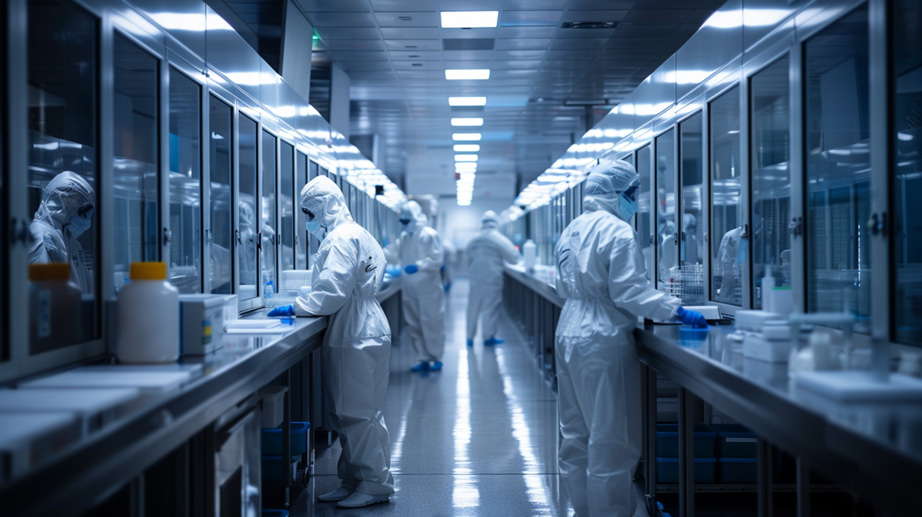
Regular Reviews of Training and Protocols
To maintain the highest standards, we conduct regular reviews of our training programs and cleanroom protocols. This ensures that all personnel are up-to-date with the latest cleanroom practices and technologies, and that our cleanrooms continue to meet the stringent requirements necessary for optics manufacturing and research.
Selecting Materials and Equipment for Optics Cleanrooms
Criteria for Selection
In optics cleanrooms, the selection of materials and equipment is governed by stringent criteria to ensure safety and compatibility. Materials must be non-particulating, resistant to the cleanroom’s cleaning agents, and incapable of outgassing harmful vapors. Equipment is chosen based on its ability to function without compromising the cleanroom’s controlled environment. At G-Con, we guide you in selecting materials and equipment that meet these criteria, ensuring the integrity of your optical components.
Impact on Cleanroom Operations
The materials and equipment used within cleanrooms directly impact operations and the quality of optical components. Inappropriate materials can introduce contaminants or react adversely with the cleanroom atmosphere, leading to defects. Therefore, we emphasize the importance of selecting materials that are proven to be cleanroom-safe, enhancing the reliability of your operations.
Innovations Shaping the Future
Innovations in cleanroom materials and equipment are continuously evolving, with a focus on enhancing cleanliness and efficiency. Advancements such as antimicrobial surfaces and smart cleanroom technologies are being integrated to meet the dynamic needs of the optics industry.
G-Con’s Modular Cleanroom Design
Our modular cleanroom design at G-Con accommodates the specific needs of optics cleanrooms by providing a flexible, scalable solution. The design allows for easy integration of specialized equipment and materials, ensuring that your cleanroom can adapt to the latest innovations while maintaining compliance with industry standards.
Key Considerations in Optics Cleanroom Design
Designing an optics cleanroom requires meticulous planning to ensure both efficiency and compliance with industry standards. Key considerations include:
- Contamination Control: The layout must facilitate stringent contamination control protocols, with a focus on minimizing particulate generation and ensuring proper airflow patterns.
- Equipment Integration: Accommodating specialized equipment, such as ultrasonic baths and photolithography stations, is essential for the precise manufacturing processes of optical components.
- Scalability: The design should allow for future expansion or reconfiguration to adapt to evolving technological needs or production demands.
Impact of Cleanroom Layout on Workflow and Contamination Control
The layout of a cleanroom directly affects operational workflow and the effectiveness of contamination control measures. It should be strategically planned to:
- Create a logical sequence of operations, minimizing cross-contamination risks.
- Facilitate unidirectional flow of personnel and materials, adhering to ISO 14644-1 standards.
- Incorporate pass-through chambers and air showers to reduce contaminant ingress.
G-Con’s Role in Modular Cleanroom Solutions
At G-Con, we specialize in providing modular cleanroom solutions tailored to the optics industry. Our role encompasses:
- Designing cleanrooms that meet specific ISO class requirements.
- Offering prefabricated PODs, such as standardPOD and smartPOD, for rapid deployment and flexibility.
- Ensuring that our cleanrooms integrate seamlessly with your existing facilities and processes.
Optimizing Cleanroom Design for Efficiency and Compliance
To optimize cleanroom design, we focus on:
- Utilizing advanced materials and construction techniques to enhance cleanroom performance.
- Implementing automation and control systems for environmental monitoring and regulation.
- Providing comprehensive services from design to installation, ensuring that your cleanroom operates at peak efficiency while maintaining full regulatory compliance.
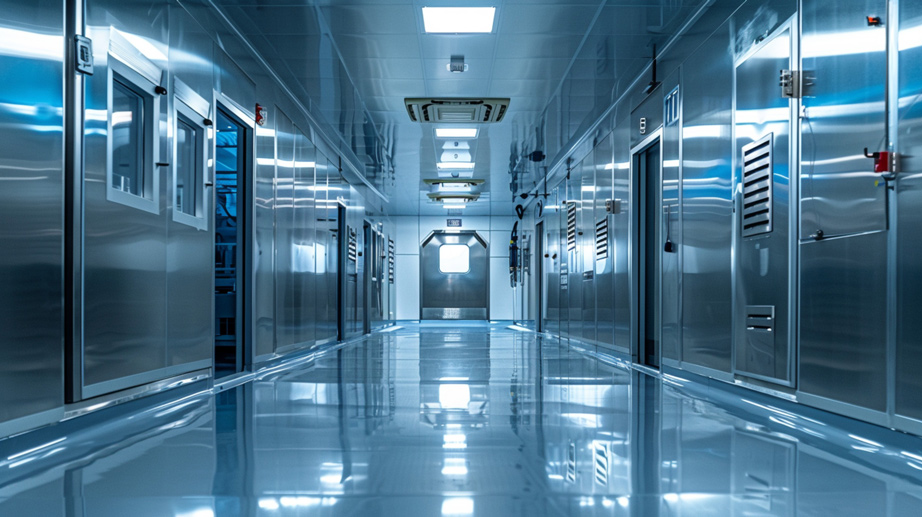
Maintenance, Cleaning, and Upkeep Practices for Optics Cleanrooms
Maintaining the stringent cleanliness required in optics cleanrooms is a continuous process. At G-Con, we adhere to industry best practices to ensure that our cleanrooms remain compliant with ISO 14644-1 standards.
Best Practices for Cleanroom Maintenance
Regular maintenance and cleaning are critical to the integrity of optics cleanrooms. Our protocols include:
- Scheduled Cleaning: Conducting daily, weekly, and monthly cleaning routines using approved disinfectants and equipment.
- Deep Cleaning: Implementing comprehensive deep cleaning procedures on a semi-annual basis or as required by the cleanroom classification.
- Contamination Monitoring: Continuously monitoring for particulate and microbial contamination to address potential issues promptly.
Frequency of Deep Cleaning and Maintenance Checks
Deep cleaning and maintenance checks are typically performed every six months, although this may vary based on the cleanroom’s usage and the sensitivity of the optical components being handled.
Challenges in Sustained Cleanroom Maintenance
Over time, maintaining a cleanroom can present challenges such as wear and tear on equipment and the need for updates to meet evolving industry standards. Our approach includes regular assessments and upgrades to infrastructure and practices to mitigate these challenges.
Evolution of Maintenance Practices
As technology advances, so do our maintenance practices. We incorporate the latest in cleaning technology and materials, ensuring that our cleanrooms meet current and future demands of the optics industry. This proactive stance allows us to provide you with a cleanroom environment that supports the highest quality in optical manufacturing.
Cost Management and Efficiency in Cleanroom Operations
Understanding the financial aspects of operating an optics cleanroom is crucial for your organization. The major cost drivers typically include the initial setup, ongoing maintenance, personnel training, and the energy consumption required to maintain stringent environmental controls.
Major Cost Drivers
The initial investment in high-quality filtration systems, specialized cleanroom materials, and state-of-the-art equipment can be substantial. However, these costs are balanced by the long-term benefits of ensuring the integrity of sensitive optical components and avoiding costly contamination incidents.
Maximizing Efficiency to Manage Costs
Efficiency in cleanroom operations is key to managing costs. This can be achieved through:
- Streamlined Processes: Implementing lean methodologies to optimize workflow and reduce waste.
- Energy-Efficient Systems: Investing in energy-efficient HVAC and lighting systems to lower utility costs.
- Regular Maintenance: Conducting preventative maintenance to avoid expensive repairs and downtime.
Role of Technology in Cost Reduction
Advancements in cleanroom technology, such as automation and real-time monitoring systems, play a significant role in reducing operational costs. These technologies enhance precision and reduce the need for manual intervention, leading to cost savings over time.
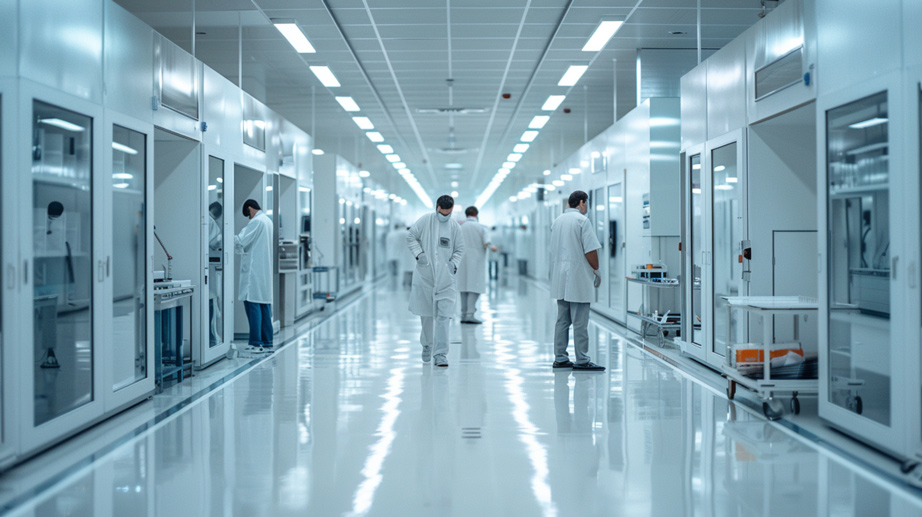
G-Con’s Modular Cleanroom Solutions
Our modular cleanroom solutions at G-Con are designed with cost-efficiency in mind. The prefabricated nature of our PODs allows for rapid deployment and scalability, reducing construction time and costs. Additionally, the flexibility of our modular systems means that you can expand or adapt your cleanroom as your needs change, without the expense of a complete rebuild.
Emerging Technologies and Innovations in Cleanroom Design
The landscape of cleanroom design is rapidly evolving, with new technologies enhancing the precision and efficiency of these critical environments. In the realm of optics cleanrooms, these advancements are particularly impactful.
Cutting-Edge Technologies in Cleanroom Design
Emerging technologies in cleanroom design include:
- Smart Monitoring Systems: Real-time monitoring of environmental conditions, allowing for immediate adjustments to maintain optimal settings.
- Automated Cleaning Robots: Devices that ensure consistent cleanliness without human intervention, reducing contamination risks.
- Advanced Materials: Surfaces with antimicrobial properties and improved resistance to cleaning agents, extending the lifespan of the cleanroom.
Application in Optics Cleanrooms
In optics cleanrooms, these technologies are applied to:
- Enhance Precision: Automated systems provide a level of precision in environmental control that is critical for the production of high-quality optical components.
- Increase Efficiency: Smart monitoring systems streamline the maintenance process, reducing downtime and operational costs.
Future Trends in Cleanroom Design
Anticipated trends include:
- Integration of IoT: The Internet of Things (IoT) will further automate cleanroom operations, providing seamless control over all aspects of the environment.
- Sustainability: Focus on energy-efficient designs and materials to reduce the environmental impact of cleanroom operations.
G-Con’s Commitment to Innovation
At G-Con, we are committed to staying at the forefront of cleanroom innovation. Our modular cleanroom solutions are designed to easily integrate these emerging technologies, ensuring that your optics cleanroom remains state-of-the-art. We continuously explore new advancements to provide you with cleanrooms that lead the industry in both performance and reliability.
Partner with G-Con for Your Optics Cleanroom Solutions
At G-Con, we understand the critical nature of cleanrooms in the optics industry. Our expertise in designing and implementing modular cleanrooms ensures that your specific needs are met with precision and care.
Tailored Design and Implementation
Our team works closely with you to tailor cleanroom designs that align with your optical manufacturing requirements. We consider factors such as:
- ISO Classifications: Ensuring compliance with the necessary ISO standards for particle levels.
- Contamination Control: Integrating advanced filtration and airflow systems to maintain an immaculate environment.
- Equipment and Layout: Customizing the design to accommodate specialized optics equipment and workflows.

Advantages of G-Con’s Modular Cleanrooms
G-Con’s modular cleanrooms stand out in the industry due to their:
- Flexibility: Easily reconfigurable to adapt to your evolving needs.
- Scalability: Designed to grow with your business, ensuring long-term value.
- Rapid Deployment: Prefabricated PODs allow for quicker installation compared to traditional construction.
Initiating Consultation with G-Con
To begin a consultation for your cleanroom project, you can reach out to us through our website or direct communication channels. Before contacting us, it’s beneficial to prepare:
- Project Scope: Outline your specific requirements and objectives.
- Operational Details: Information on the optical components you’ll be handling.
- Compliance Needs: Any specific regulatory standards your cleanroom must meet.
Our team at G-Con is ready to assist you in developing a cleanroom solution that ensures the integrity of your optical components and the success of your operations.